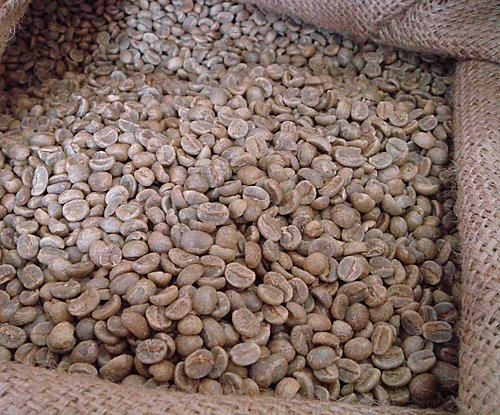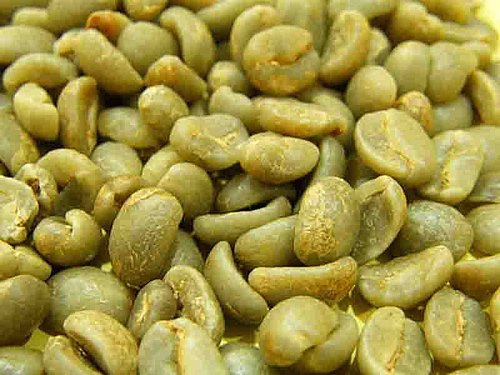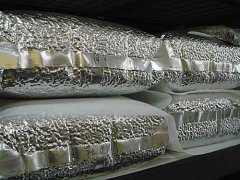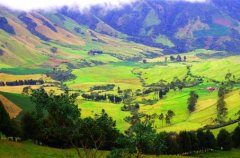Description of flavor and taste of coffee beans treated with honey from Costa Rica-Zaragoza (Zaragoza) manor
For professional baristas, please follow the coffee workshop (Wechat official account cafe_style)

Costa Rica Montcleso (Monte Crisol) region-Zaragoza (Zaragoza) manor honey treated coffee
Costa Rican coffee is of the most stable quality in Central America, mainly because it grows in the natural environment of complete tree shade and cool rainy nights with large temperature differences in the morning and evening, coupled with rich soil and stable progress in the middle and later stages of treatment, and through the combination of organized coffee estates and national agricultural policies, Costa Rican coffee has a poor reputation and has long been an indicator of Central American coffee. The more famous producing areas are Tarazhu, Sanshui River and the Central Valley, but inspired by the coffee competition, many coffees are becoming more and more refined. More and more small and beautiful previously unknown estates gradually increase their popularity so that the world can taste more levels, more kinds and more ways of handling Costa Rican coffee beans. Costa Rica's current treatment is also developing in many ways. In addition to the well-known traditional washing method and the most popular honey treatment (Miel Process), sun-dried beans are available even in this water-rich country, all to make up for the weakness of the taste.
The water treatment method emphasizes that the taste is clear and clean, and the acid is as quick as a razor, while the honey treatment emphasizes that the taste is complex and layered, reducing acidity and increasing sweetness. Honey treatment is a kind of semi-washing method, which will leave some mucous membrane on the coffee bean surface, which is precisely adjusted and controlled by the machine, and the amount of mucous membrane residue will affect the quality of coffee. This technology is the trade secret of the farm or processing plant. Which farm or processing plant can leave the best honey mucosa according to the coffee beans produced in that year to increase the best sweetness and complexity of coffee beans? It will bring good income for this year and pay off for this year's hard work. In 2010, the Costa Rican honey treatment method can be distinguished according to the proportion of coffee beans with honey mucosa in each bag of coffee. Coffee farms will clearly mark the proportion of honey mucosa on coffee bean bags. Coffee is first treated with honey and then mixed with natural water beans in a certain proportion, so there are washed beans and 100% honey beans at the same time.
Honey treatment is one of the ways of half-sun treatment, which is to remove the skin and pulp by machine, and then dry the coffee beans with mucous membrane in the sun until the humidity reaches 11%. Finally, the mucous membrane of sheepskin-wrapped coffee beans are removed by machine.
It is labeled as PULPED NATURAL on the bean bag and is called honey treatment in Costa Rica
There are about 1350 coffee farms and cooperatives in Monte Crisol, Montcleso, western Costa Rica. Coffee is produced on red volcanic soil at an altitude of 1000 to 1500 meters. The annual output of coffee beans grown under 100% shade trees is about 50, 000 bags. The honey-treated coffee beans in Zaragoza estate in Montecleso region are light yellow, which is different from the yellowish brown half of Robles manor treated with 50% honey.

Zaragoza Manor Honey treated Coffee beans are light yellow and have a complete shape

The picture above shows the 100% honey treatment of Zaragoza Manor, which is yellowish brown and softer.
The picture below shows 50% of the honey treatment of Robles Manor, and some of the colors are light green and harder.

Shallow baking end (City): the dry aroma after grinding is the aroma of sesame with coconut aroma, which is not traditional Costa Rican clean, loud and bright orange sour, showing the sour feeling of orange juice is a little unsteady and slippery, the acid soon turns to the sweetness of toffee, the taste is round and layered, and the aftertaste is balanced and stable orange sweetness.
60 seconds after baking (Full City-): this baking degree has the most stable and pleasing sugar sweetness, the ground coffee has the aroma of raisins, the brewed coffee is full of mango and banana fruit, the taste is smooth and meticulous without rustic flavor and impurities, the slightly sour entrance disappears quickly and the acidity cannot be sustained later, and there is the scent of citrus scented tea in the sweet finish.
Re-baking second explosion (Full City): the aroma of chocolate caramel is obvious, compared with washed beans, the treated beans are full of rich brown sugar sweetness, acidity no longer exists during re-baking, the taste is thick, smooth and heavy, and the sweetness of red apples surrounds the mouth.
Cup test date: 2010.09.30
Dry aroma: 8
Wet aroma: 8
Clean: 8
Brightness: 7
Palate: 9
Balance: 9
Complexity: 9
Sweetness: 10
Acid quality: 9
Yu Yun: 10
Cup test score: 87
Overall comments: Costa Rica is determined to bring coffee beans to a sweeter and more complex realm, surging toward more refined processing, and the amazing appearance of sun-dried beans. The coffee revolution in Central America has broken the boundaries of the coffee world. It is not said that Ethiopia is the power of sun-dried beans. Clean washed beans are Costa Rica. Only good quality can be favored. In the era of high coffee prices, consumers have the choice of better, better and better coffee.
Important Notice :
前街咖啡 FrontStreet Coffee has moved to new addredd:
FrontStreet Coffee Address: 315,Donghua East Road,GuangZhou
Tel:020 38364473
- Prev

Description of Cup parameters and Flavor of Notre Dame Manor, the fourth winner in Nicaragua COE Coffee Competition
For the exchange of professional baristas, please follow the coffee workshop (official Wechat account cafe_style) Notre Dame Manor (Santa Guadalupe), the fourth winner in the 2010 Nicaragua COE National Coffee Competition. The winning coffee in the COE Coffee Competition will be vacuum packed in aluminum foil to prevent the loss of coffee flavor and odor invasion. Coe International Coffee Cup testing Organization led by British raw bean merchants
- Next

El Salvador-Santa Rita Manor selected Solar batch Cup score Flavor description
For the exchange of professional baristas, please pay attention to the coffee workshop (Wechat official account cafe_style) El Salvador-Santa Rita (Santa Rita) Manor El Salvador is the smallest and most densely populated country in Central America, most of the main agricultural products are coffee beans, we can see the impact of coffee on El Salvador, 60% of coffee beans are traditional bourbon tree species, and bourbon tree species coffee is the largest.
Related
- Does Rose Summer choose Blue, Green or Red? Detailed explanation of Rose Summer Coffee plots and Classification in Panamanian Jade Manor
- What is the difference between the origin, producing area, processing plant, cooperative and manor of coffee beans?
- How fine does the espresso powder fit? how to grind the espresso?
- Sca coffee roasting degree color card coffee roasting degree 8 roasting color values what do you mean?
- The practice of lattes: how to make lattes at home
- Introduction to Indonesian Fine Coffee beans-- Java Coffee producing area of Indonesian Arabica Coffee
- How much will the flavor of light and medium roasted rose summer be expressed? What baking level is rose summer suitable for?
- Introduction to the characteristics of washing, sun-drying or wet-planing coffee commonly used in Mantenin, Indonesia
- Price characteristics of Arabica Coffee Bean Starbucks introduction to Manning Coffee Bean Taste producing area Variety Manor
- What is the authentic Yega flavor? What are the flavor characteristics of the really excellent Yejasuffi coffee beans?

